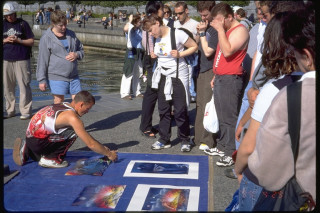Read an excerpt from this article below. You can download the full article by using the link at the end of the excerpt.
Today, there is more and more discussion about the importance of “places.” Travel books are devoted to the best “places” in different cities, states and parts of the world. Other books have re-introduced us to the importance of the “places” where we go just to hang out or stroll when we’re not at home or working — or shopping! Many books say that we are losing our “sense of place” and that we need to work very hard to get them back if our communities are to become more livable.
Design magazines give awards to projects that they consider the best public space designs. Yet rarely do these award-winning designs turn out to be good “places.” Somehow the discussions about the loss of places and the reality of being able to create them have not come together in any meaningful way.
From our experience, placemaking requires a radically different approach than is used by most designers today. In contrast to the traditional design or planning process, a place-oriented approach is necessarily broader than one that is primarily design driven.

Creating a place depends more on effective management than it does design and requires the involvement of many different disciplines because of the extremely complex issues that need to be addressed. For example, good maintenance and effective security are obviously important but so is good access by foot and public transportation. Amenities such as comfortable seating, well located waste receptacles, effective signage, bathrooms, opportunities to buy food etc. are all important qualities of successful places. And it is beyond the experience of any one profession to deal with all of these issues.
If the new mission is to “create a successful well-used place” then the role of the professionals, including the design professional, is as a resource for communities. They should work to implement the community’s vision. …
End of excerpt